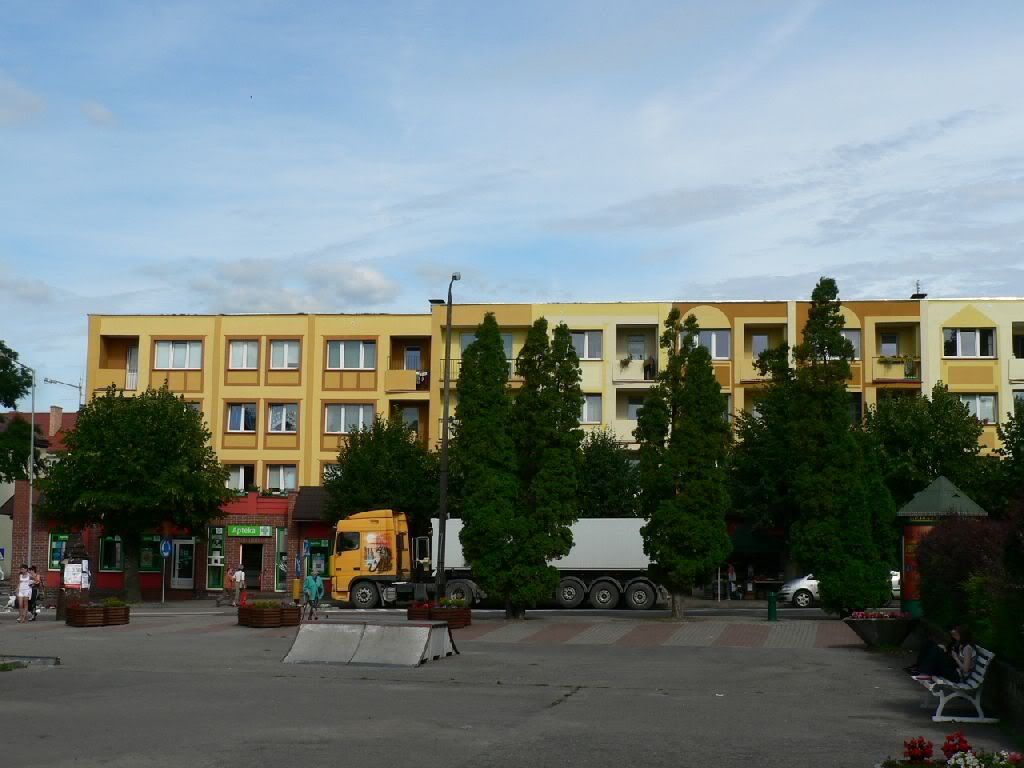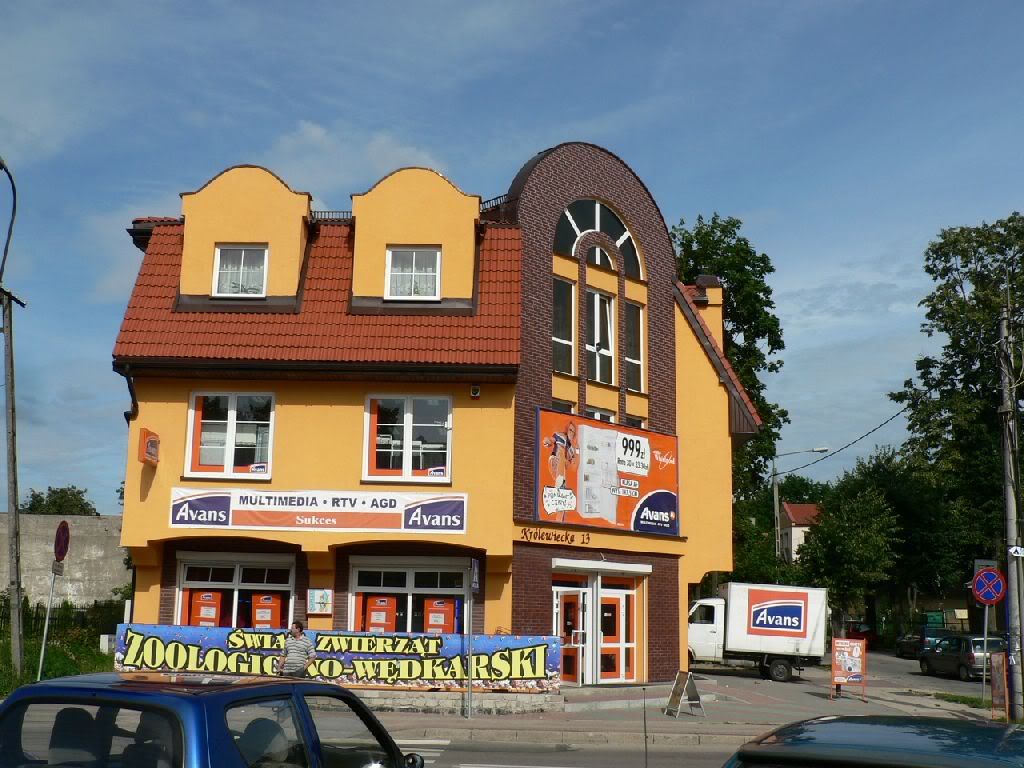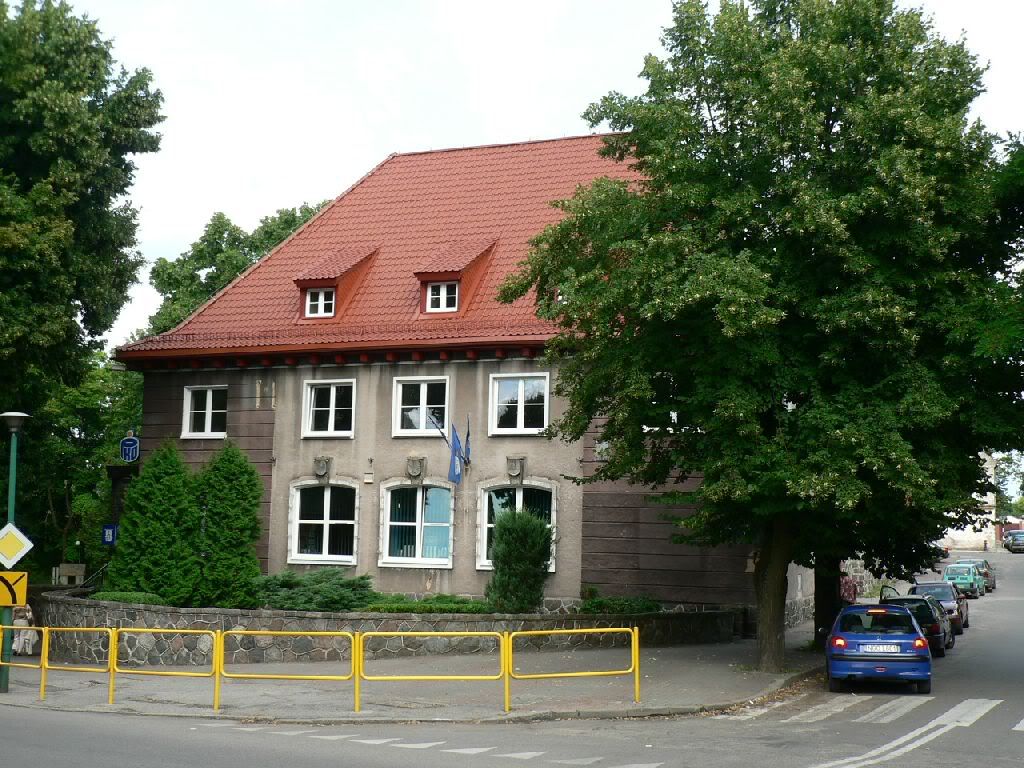Goldap - very ordinary town in former East Prussia
Looking to the my archives I found photos from the town Goldap in former East Prussia. Those photos I made in 2008. Town wasn't very interesting to me and I skipped it when I made a series of reports about the modern Polish part of East Prussia last year. But Goldap has some very characteristic features for the East Prussia both in material heritage as well as in public mythology:

Goldap is one of the easternmost towns in former East Prussia among the the seats of Landkreis. Historically it was part of the so-called Lithuania Minor (Kleine Litauen) - once Lithuanian speaking part of Prussia. It is interesting that in this part Lithuanian language survived very long: even at the beginning of XXth century the area of Goldap was largely Lithuanian speaking while many areas to the north became nearly completely German speaking.
Historically this town wasn't important or here were not many important events. Town rights Goldap got only in 1570 what is late for the context of Prussia.
In October 1944 Goldap was the first German town which felt to the hands of Red Army (Wehrmacht reconquered it in November and held it till the January 1945). Those heavy fights are blamed that modern Goldap almost don't have any historic heritage: official historiography tells that 90% of Goldap was ruined down in WWII. But being in Prussia many questions and doubts arises ...
Now this town is one of the closest towns in Poland to the border of Russia's Kaliningrad region: only 3 km to the north is the state border.
On arrival just outside the town is this monument to the honor of Red army built in 1962:

Monument as monument only the record is strange for the former Reich town:

Right in the center of Goldap few remaining older German houses that now are used for the administrative purposes by the Polish authorities:


Other part of the center is mainly composed from typical PRL period commieblocks renovated in recent years:


The central component of the square is this monument to commemorate "braterstwo bojowe" of Wojsko Polskie and Red Army built in 1982: )

Large part of the square is occupied by the park where this modern monument was found (Bog Honor Ojczyzna):

It is difficult to date those buildings:

But those buildings are clearly modern built trying to simulate typical style for the region:



Remaining part of old street:

In the complete neighborhood of the center is the neo-gothic church of St.Leon built in 1894:

And near this church is the former complex of German army barracks (in principle this is characteristic for Prussia - very good state of survival of military barracks). Those barracks are the point which raises my doubts to the official historiography. As I said official info is telling that more than 90% of Goldap was ruined down in heavy fights of 1944 and 1945. And yes older buildings in the center are almost not-existent. But then how it could be possible that whole complex of army barracks situated about 200 - 400 meters from the center survived almost intact ? (Goldap has huge military buildings complex. It should be noted that near Goldap his residence had Goering). May be the answer is the observation of Polish historians from Olsztyn (group Regionalista Warmii- Mazur) ? They analyzed the destruction of Olsztyn and found that if the town of Allenstein has been ruined down by 70% only 25% of destruction could be attributed to the military actions ...
And here is the complex of barracks. To say the truth I was anxious to do more photos since the complex is actively used by the Polish army today but some impression I hope you can get:

Officers club. It is absolutely clear that military barracks are the biggest complex of pre-WWII buildings in Goldap:


Another similar military building:

Now let's go to the other side from the center. One of the very few remaining older buildings now used as bank branch:

The sculpture of elk - the symbol of this region:

And finally the biggest monument in Goldap - the late Gothic cathedral built in 1560 and reconstructed in 1706-1717. The church has been restored only in 1980-1984 after the war and post-war destruction. Early in 2000s another restoration has been carried on:


And finally the modest monument to Immanuel Kant. The great philosopher was very lonely and closed-style person and lived almost whole life in Koenigsberg . He made only one bigger travel travel in his life time - to Goldap were he spent six months. The biggest period outside Koenigsberg:


counter widget

Goldap is one of the easternmost towns in former East Prussia among the the seats of Landkreis. Historically it was part of the so-called Lithuania Minor (Kleine Litauen) - once Lithuanian speaking part of Prussia. It is interesting that in this part Lithuanian language survived very long: even at the beginning of XXth century the area of Goldap was largely Lithuanian speaking while many areas to the north became nearly completely German speaking.
Historically this town wasn't important or here were not many important events. Town rights Goldap got only in 1570 what is late for the context of Prussia.
In October 1944 Goldap was the first German town which felt to the hands of Red Army (Wehrmacht reconquered it in November and held it till the January 1945). Those heavy fights are blamed that modern Goldap almost don't have any historic heritage: official historiography tells that 90% of Goldap was ruined down in WWII. But being in Prussia many questions and doubts arises ...
Now this town is one of the closest towns in Poland to the border of Russia's Kaliningrad region: only 3 km to the north is the state border.
On arrival just outside the town is this monument to the honor of Red army built in 1962:

Monument as monument only the record is strange for the former Reich town:

Right in the center of Goldap few remaining older German houses that now are used for the administrative purposes by the Polish authorities:


Other part of the center is mainly composed from typical PRL period commieblocks renovated in recent years:


The central component of the square is this monument to commemorate "braterstwo bojowe" of Wojsko Polskie and Red Army built in 1982: )

Large part of the square is occupied by the park where this modern monument was found (Bog Honor Ojczyzna):

It is difficult to date those buildings:

But those buildings are clearly modern built trying to simulate typical style for the region:



Remaining part of old street:

In the complete neighborhood of the center is the neo-gothic church of St.Leon built in 1894:

And near this church is the former complex of German army barracks (in principle this is characteristic for Prussia - very good state of survival of military barracks). Those barracks are the point which raises my doubts to the official historiography. As I said official info is telling that more than 90% of Goldap was ruined down in heavy fights of 1944 and 1945. And yes older buildings in the center are almost not-existent. But then how it could be possible that whole complex of army barracks situated about 200 - 400 meters from the center survived almost intact ? (Goldap has huge military buildings complex. It should be noted that near Goldap his residence had Goering). May be the answer is the observation of Polish historians from Olsztyn (group Regionalista Warmii- Mazur) ? They analyzed the destruction of Olsztyn and found that if the town of Allenstein has been ruined down by 70% only 25% of destruction could be attributed to the military actions ...
And here is the complex of barracks. To say the truth I was anxious to do more photos since the complex is actively used by the Polish army today but some impression I hope you can get:

Officers club. It is absolutely clear that military barracks are the biggest complex of pre-WWII buildings in Goldap:


Another similar military building:

Now let's go to the other side from the center. One of the very few remaining older buildings now used as bank branch:

The sculpture of elk - the symbol of this region:

And finally the biggest monument in Goldap - the late Gothic cathedral built in 1560 and reconstructed in 1706-1717. The church has been restored only in 1980-1984 after the war and post-war destruction. Early in 2000s another restoration has been carried on:


And finally the modest monument to Immanuel Kant. The great philosopher was very lonely and closed-style person and lived almost whole life in Koenigsberg . He made only one bigger travel travel in his life time - to Goldap were he spent six months. The biggest period outside Koenigsberg:

counter widget